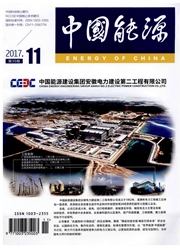

 中文摘要:
中文摘要:
美国低效化石燃料补贴改革自述报告列举了美国现存的17项化石燃料补贴政策,包括化石燃料的勘探、开发和开采补贴以及以低收入家庭能源援助计划为代表的居民部门化石燃料补贴。本文基于美国低效化石燃料补贴自述报告,选择LIHEAP进行案例研究。研究认为,LIHEAP的改革困境表现在:①化石燃料的区分性价格引起了化石燃料的过度消费,2014年供暖季较之2013年供暖补贴受援家庭数量减少了2.89%,而总支出却上升了19.23%;②LIHEAP在1993—1995财年、1999--2001财年、2005--2007财年、2008—2012财年4个区间出现替代性补贴项目(供暖补贴与房屋改造补贴)的同步增长;③LIHEAP诱致受援家庭在相同情况下倾向于消耗更多的化石燃料,其中南部地区尤为明显。在此基础上,本文结合分析美国低效化石燃料补贴改革的外在能源环境和内在制度环境,提出了若干政策建议。
 英文摘要:
英文摘要:
The US inefficient fossil fuel subsidies self-report listed 17 existing fossil fuel subsidies including subsidies for the exploration, development, and extraction of fossil fuels, and subsidies for fossil fuels employed in the residential sector (represented by the Low-income Home Energy Assistance Program). This paper chooses Low-income Home Energy Assistance Program (LIHEAP) as a case study. The results show that: (1) Discriminatory prices of fossil fuels in LIHEAP led to excessive fossil fuel consumption. Compared with 2013, the number of heating subsidies by recipient households reduced by 2.89% in 2014, while total expenditure rose by 19.23%; (2) During FY 1993 to FY 1995, FY 1999 to FY 2001, FY 2005 to FY 2007, and FY 2008 to FY 2012, weatherization benefits and crisis benefits showed a synchronous growth; (3) LIHEAP recipient households tended to consume more fossil fuel than low-income and other types of households, particularly in the south area. Finally, this paper analyzes the external institutional system and the internal energy structure of the US inefficient fossil fuel subsidies reform, and thus provides some policy implications.
 同期刊论文项目
同期刊论文项目
 同项目期刊论文
同项目期刊论文
 期刊信息
期刊信息
